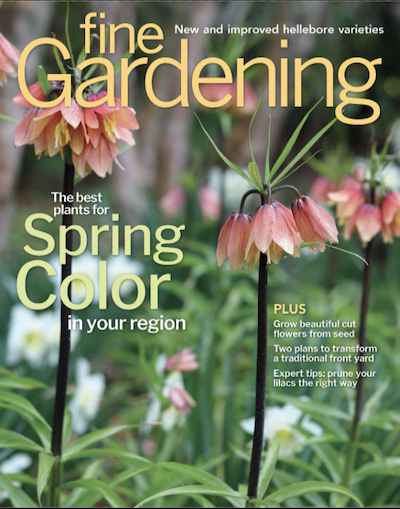Susan Calhoun
-
Pacific Northwest Regional Reports
Pest Control for the Northwest: Apple Maggot
As summer starts to heat up and everything edible starts to ripen, gardeners start worrying about apple maggots (Rhagoletis pomonella) in their apple trees. Long established in eastern North America,…
-
Pacific Northwest Regional Reports
Extraordinary Roses for the Northwest
When I talk to most gardeners about roses, they often roll their eyes. Yes, roses have been around forever, and here in the Pacific Northwest they are problematic at best…
-
Pacific Northwest Regional Reports
The Versatility of Ferns in the Northwest
In the past three years I have become a firm fan of ferns. The fiddleheads, which emerge in spring, are very subtle and primeval in shape. They draw you back…
-
Pacific Northwest Regional Reports
Designing From the Top Down in the Northwest
Designers talk about sight lines, which lead the eye through gardens and pathways with a destination. In the Pacific Northwest we have another viewpoint to consider. Many of our houses…
-
Pacific Northwest Regional Reports
Ditch Pre-Potted Nursery Containers for Your Own Creations
Our gardens are bursting with growth in early summer: roses are budding, peonies (Paeonia spp. and cvs., Zones 3–9) are blooming, and dahlias (Dahlia spp. and cvs., Zones 7–11) are…
-
Pacific Northwest Regional Reports
Online Gardening Events Are More Accessible Than Ever
Throughout 2020 and 2021 many things have changed. We have learned new ways to greet each other, how to read eyes instead of smiles, and how to simply communicate differently.…
-
Pacific Northwest Regional Reports
All-Season Golden Garden in the Northwest
I love introducing people to my “golden garden.” This garden has year-round yellow and gold color. I managed this by incorporating plants with sequential moments of bloom and other interest,…
-
Pacific Northwest Regional Reports
Mason Bees Are Easy, Homegrown Pollinators for Your Garden
Gardeners are becoming more aware of the importance of pollination in our gardens. We now plant early-blooming plants for bee food and add areas of native plants to encourage native…
-
Pacific Northwest Regional Reports
Spring Border Design for the Northwest
Designing spring borders is always a little challenging. Some plants are stubborn and refuse to bloom at the same time every year. Other plants are just emerging and are not…
-
Design
A Deer-Proof Garden Design for Dry Shade – Plant IDs
I live in a modern house perched on a coastal bluff and surrounded by Douglas firs and western red cedars (Thuja plicata, Zones 5–7) that are over one hundred years…
















